
Arriving in Naoshima
Miyanoura
I have just arrived on the island of Naoshima
in the Seto Inland Sea.
I arrived at the port town Miyanoura,
on a ferry from
Takamatsu.
Naoshima is in a narrow strait between Takamatsu on Shikoku,
Japan's fourth largest island, and Honshū,
its largest.
Naoshima and other nearby islands have a tradition of
fishing and harvesting seaweed.
In the early 1990s that began to be replaced with
art.
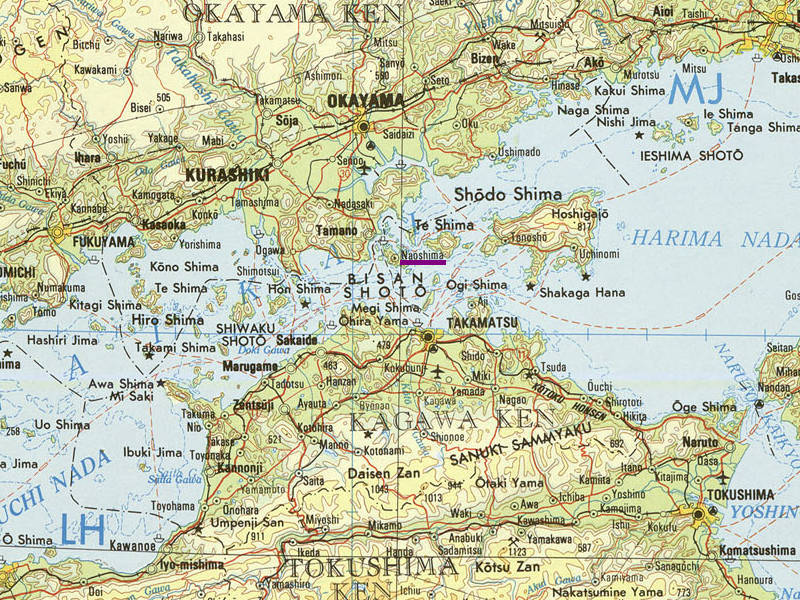
Portion of map NI-53 from the Perry Castañeda Library Map Collection at the University of Texas.
The map below is from 1952. Notice that the only marked settlement on Naoshima is Seto, in the north, and the north half, beyond the cross-island road in dark black, has no trees. The place marked as Seto, as in the sea, is actually a Mitsubishi Materials smelting operation which still controls the northern part of the island. This is like Texas state highway maps showing a town named Pantex which is really an isolated U.S. Department of Energy nuclear warhead assembly plant.
This smelter and other chemical and industrial operations after World War II polluted the Inland Sea. Fishing got worse and worse.
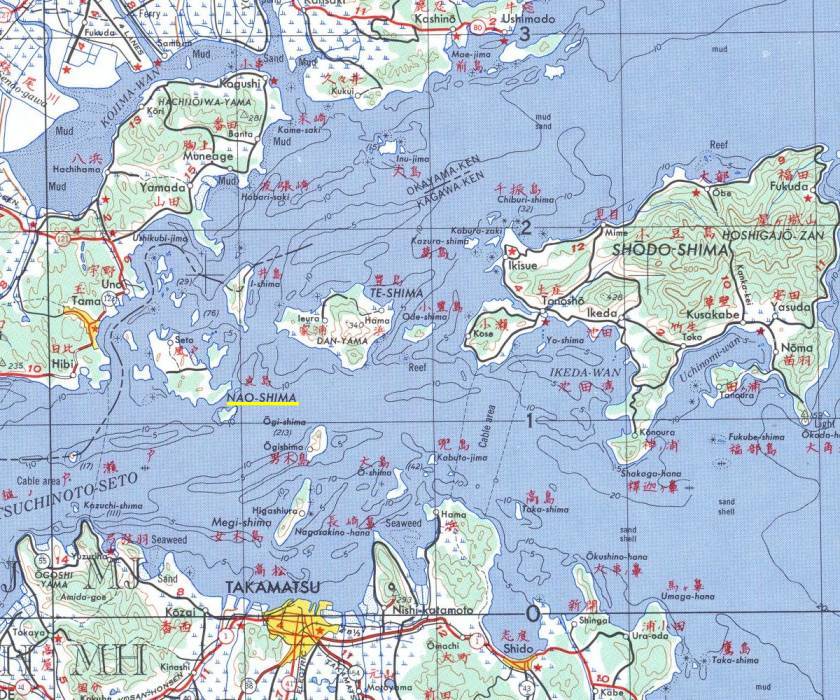
Portion of map NI-53-6 from the Perry Castañeda Library Map Collection at the University of Texas.
The islands subsisted on the limited remaining fishing, plus pensions for elderly retired fishermen. There were very few opportunities for young people, who moved away. The islands were retirement settlements with shrinking populations. The population had peaked in the late 1950s, by 2000 it was down to half what it had been. The 1971 memoir by Donald Richie and the 1991 documentary based on it, The Inland Sea, describe things back then.
In the early 1990s the Benesse Art Site was established on Naoshima by the Benesse Corporation. That's a correspondence education and publishing company, the parent company of Berlitz Langauge Schools.
The company owned a large and growing collection of contemporary art. Naoshima had a beautiful setting and available real estate. The company had purchased a large area of land, the entire southern section of the island, in 1987.
The art galleries and museums have spread to other nearby islands. The Setouchi Triennale began in 2010. It's a contemporary art festival held every three years. Abandoned buildings become art installations.
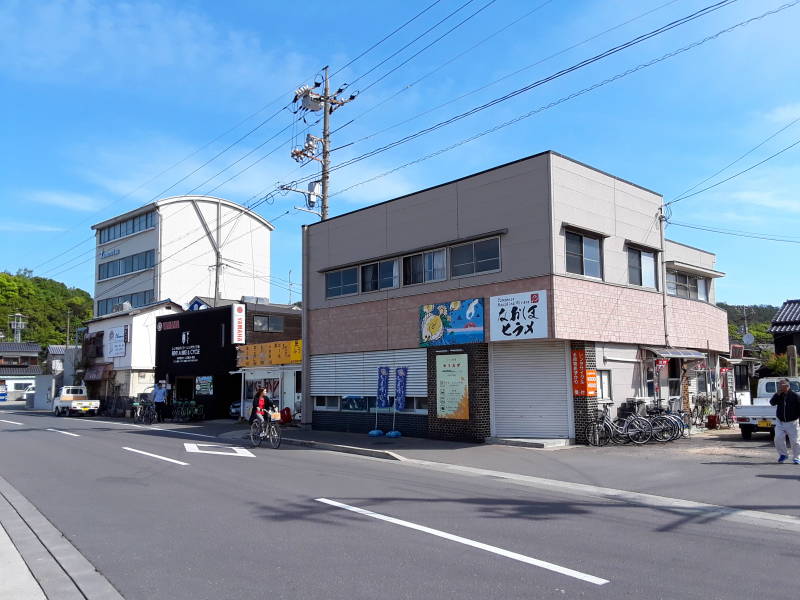
I arrived on Naoshima on a dark and wet day. Here's the view the next morning, crossing from the ferry terminal to the center of town.
The blue building back the narrow lane seen below is where I stayed.

You can see that the northern quarter of the island is still barren. Smelting is a dirty business.
Here's where I stayed, Domi Kowloon. The Little Plum guesthouse and cafe is a short way further back that lane.
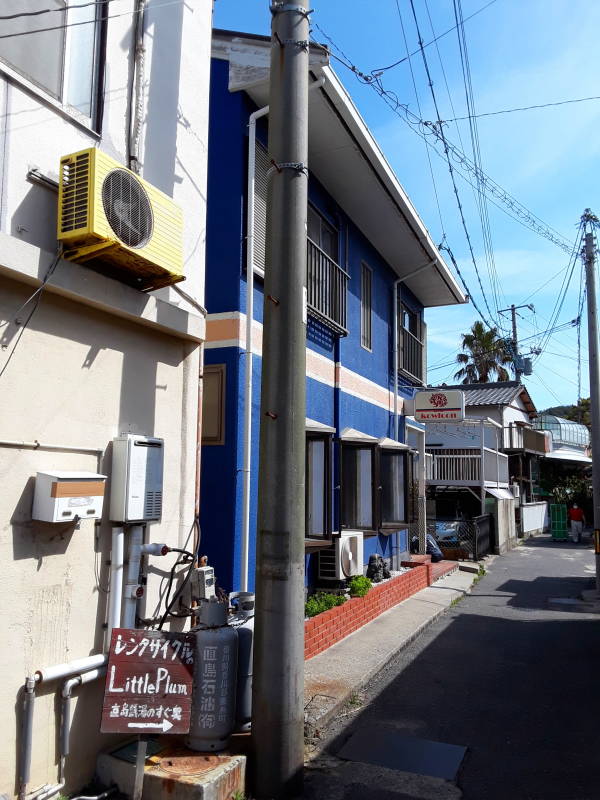
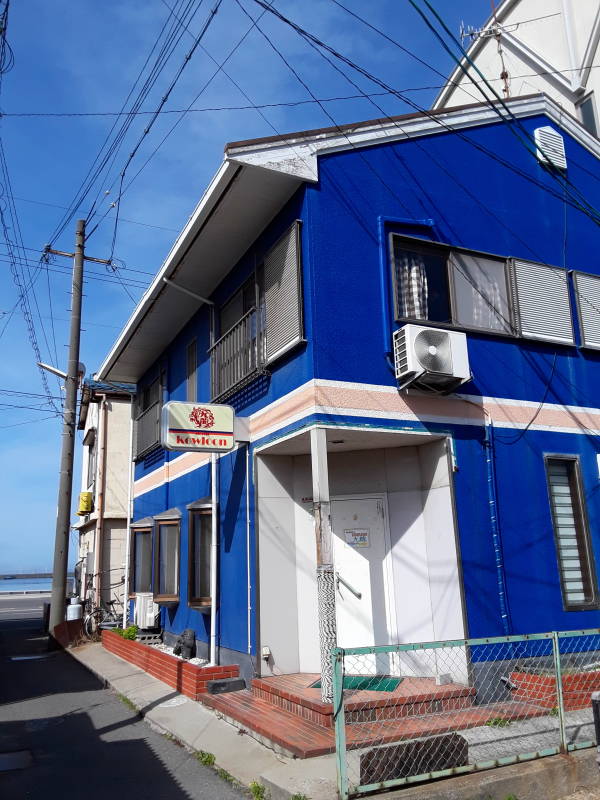
The Saru cafe / bar is just across the lane.
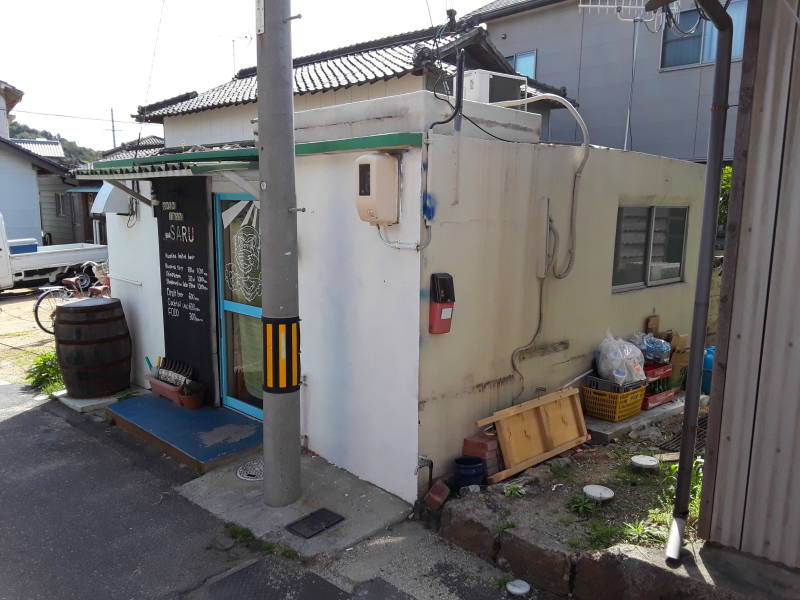
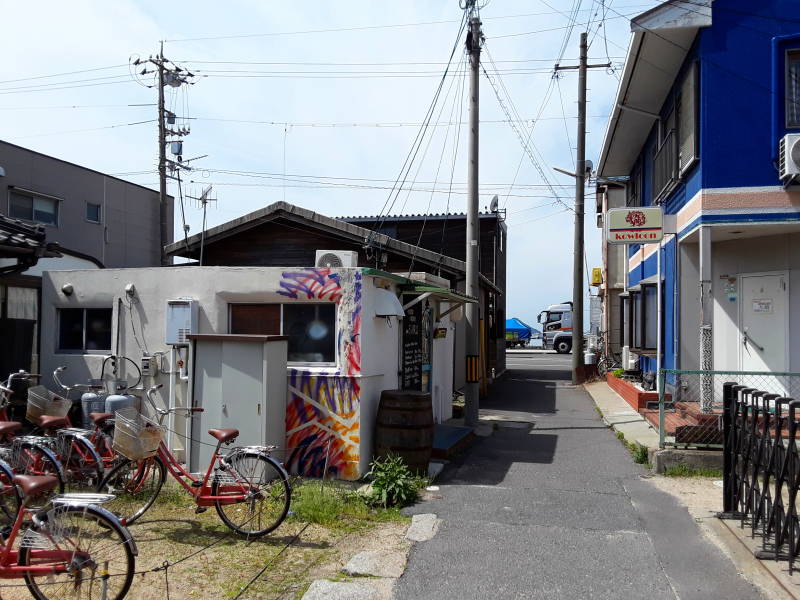
Miyanoura Port
Yayoi Kusuma was part of the avant-garde scene in New York through the 1960s. She has continued to create art since the 1970s. Her Red Pumpkin sits beside the ferry port.

She began to experience vivid hallucinations when she was ten, describing them as "flashes of light, auras, or dense fields of dots". Her art is based on fields of dots, "infinity nets" as she calls them, based on her hallucinations.
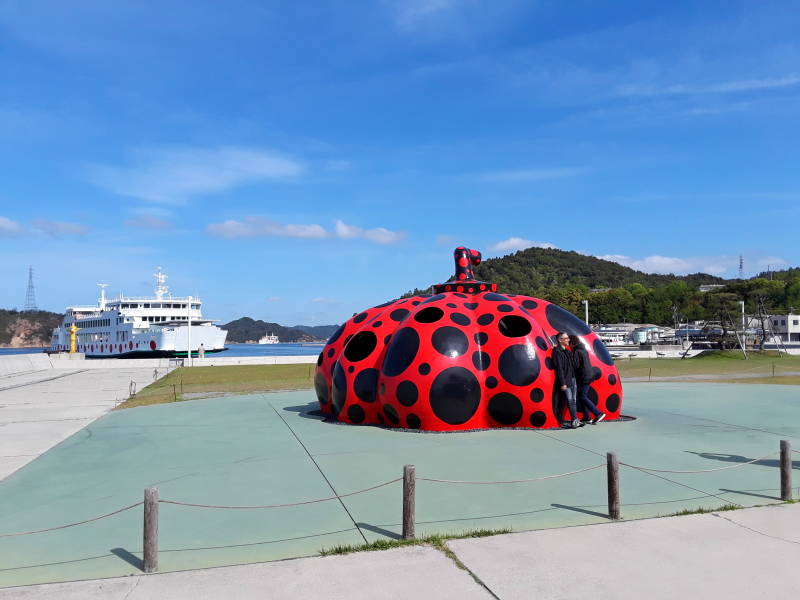
She chooses to live in Seiwa Mental Hospital in the Shinjuku district of Tōkyō, saying that art became her way to express her mental disease.
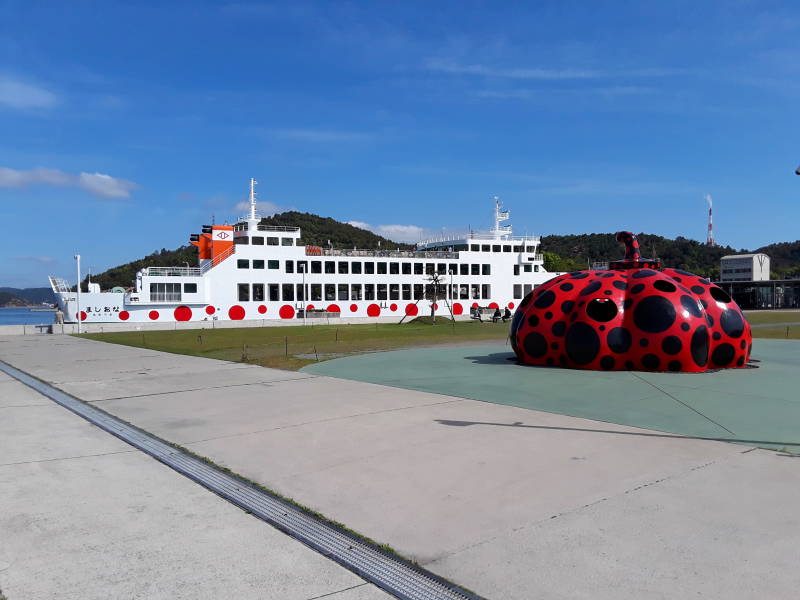
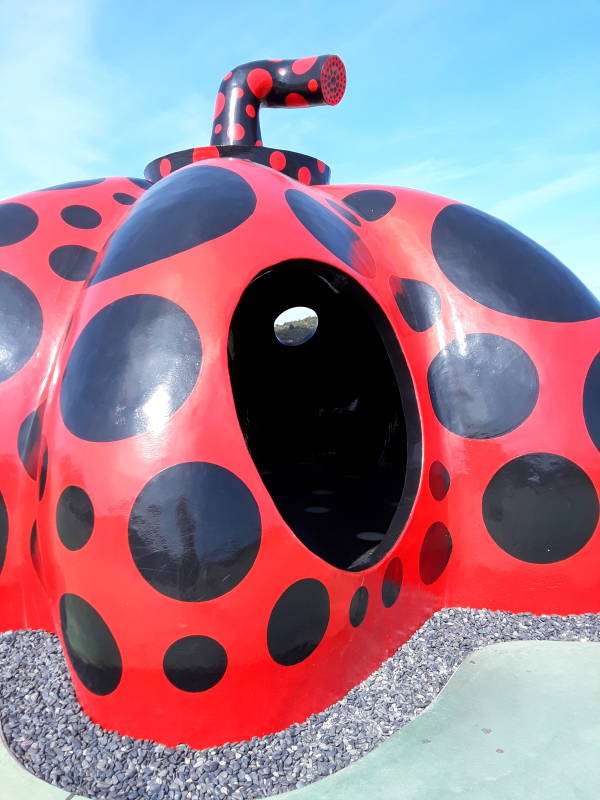
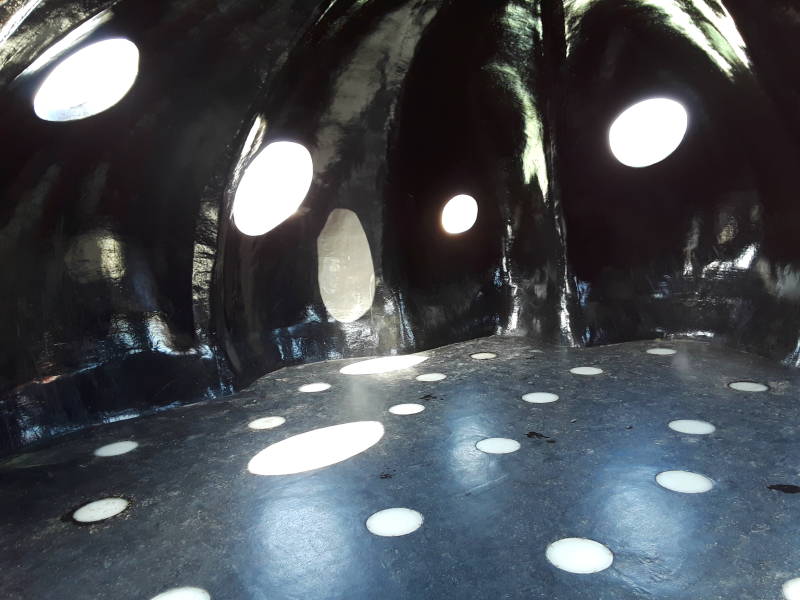
The ferries are painted in a polka-dot theme, now the island's signature.
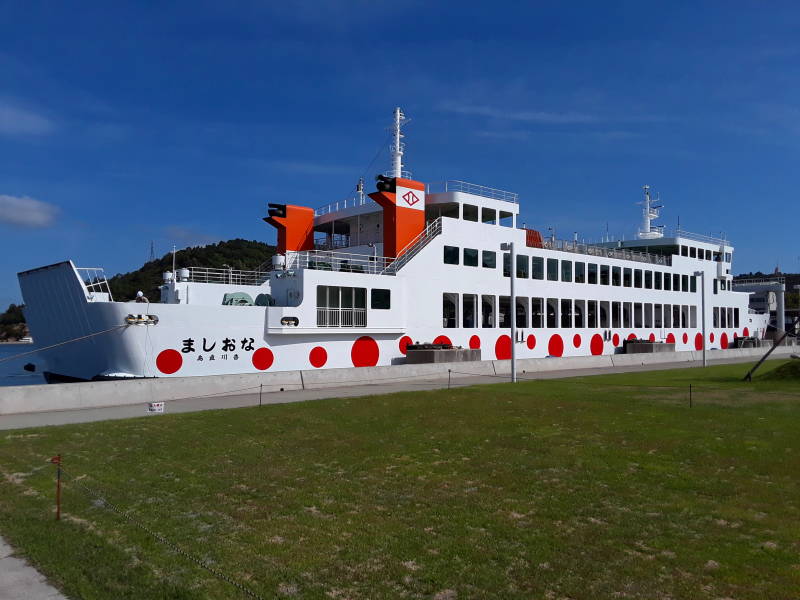
ましおな
The ma-shi-o-na.
Around Miyanoura
The town of Naoshima is defined as all the settlements on Naushima, plus 26 other islands. All of them but one are less than one square kilometer in area. The total population is just over 3,000. There are so many salarymen in plain black suits in big cities, less of that in Takamatsu, and none on Naoshima.
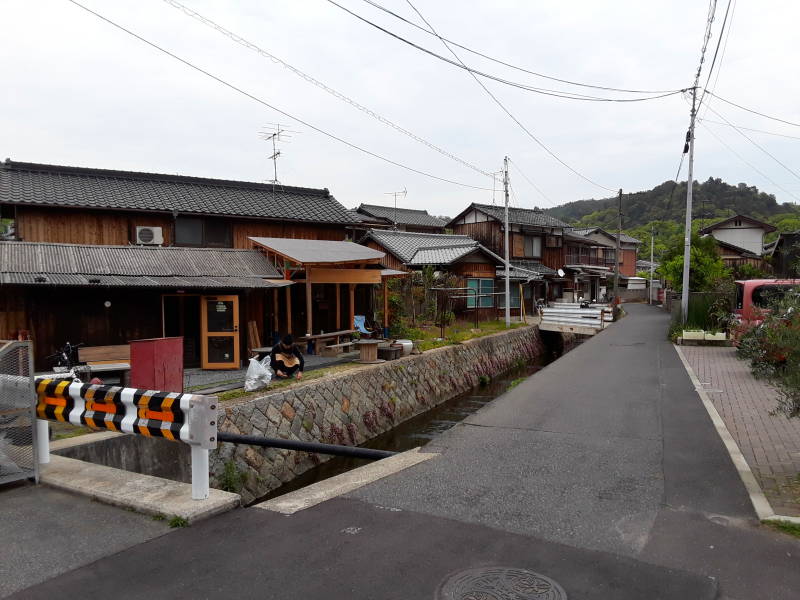
Pachinko 999 is a former amusement arcade turned into an art gallery.
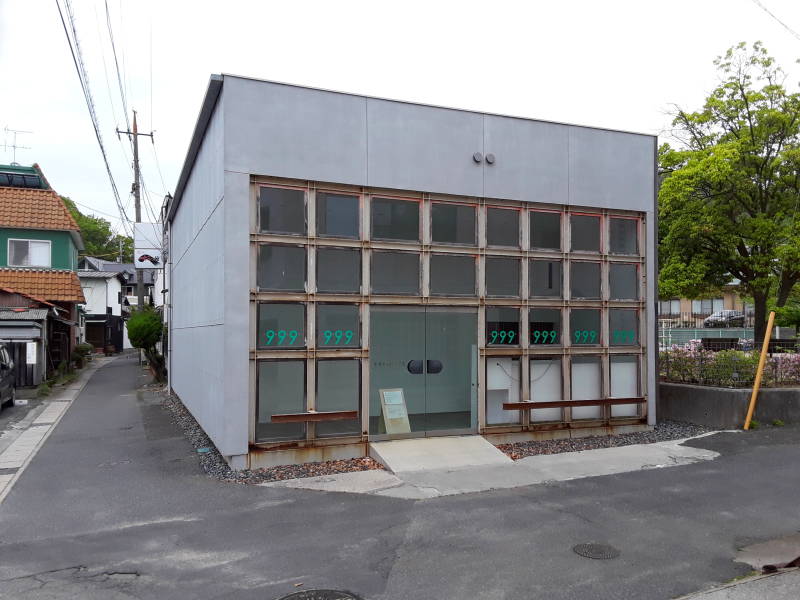
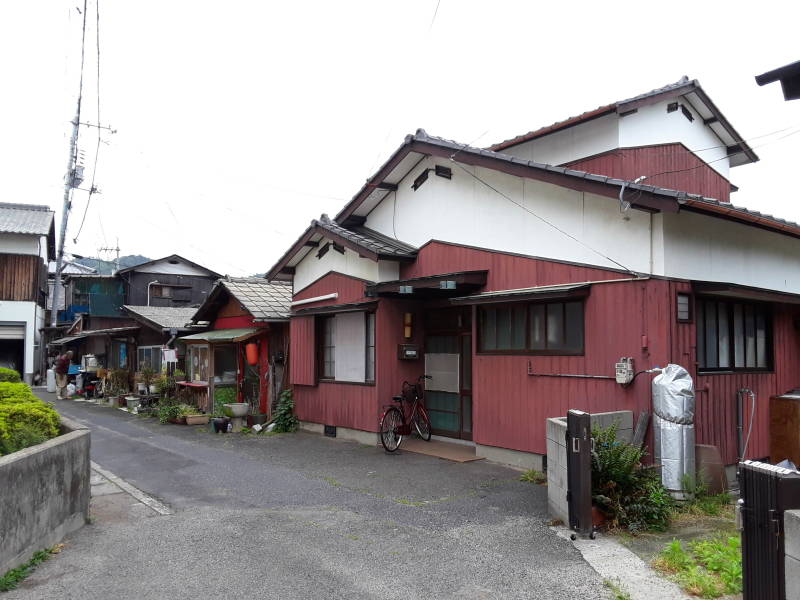
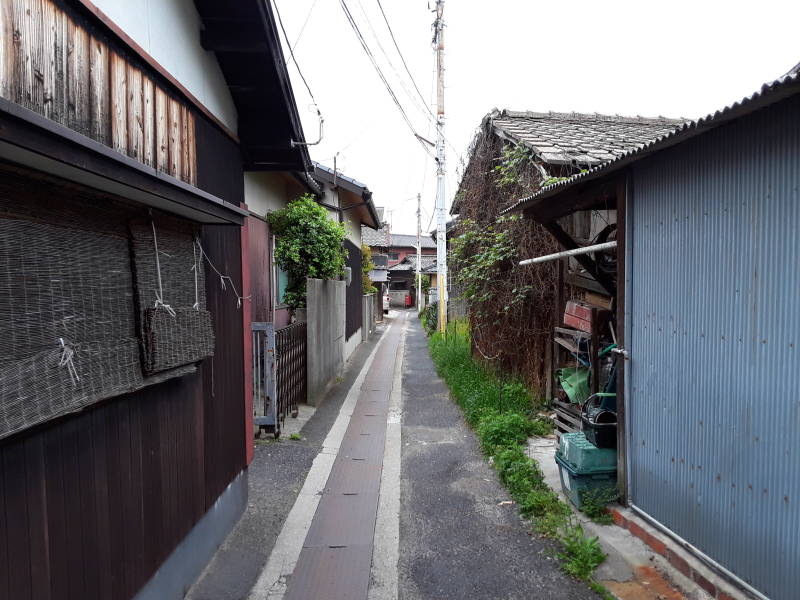
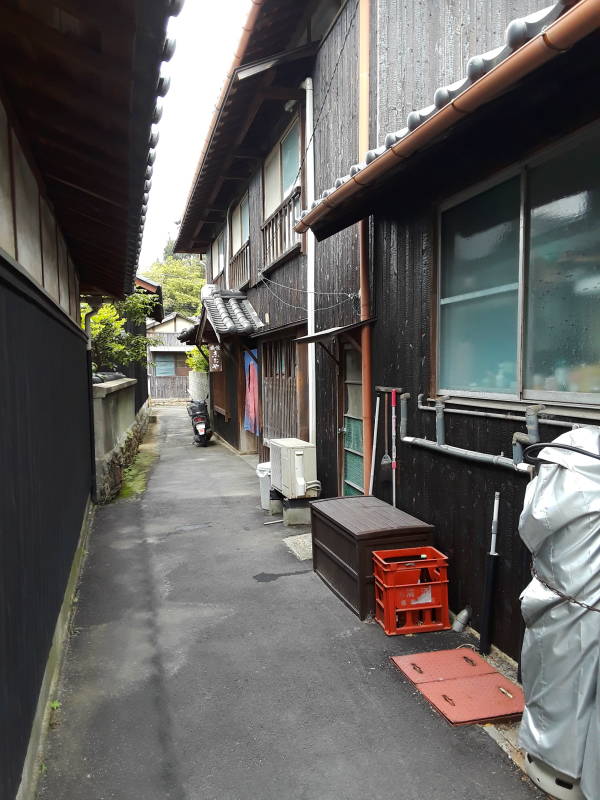

Many buildings in this region have burned cedar siding. It is used for clapboard siding, and for retaining plates buried in the soil.
Three cedar boards are combined in a triangular prism shape, tied with moistened rope. You stand that up over a small fire, to function as a chimney. After about 5 minutes of burning, the boards are ready.
The resulting charred boards are ready for installation, and should last for 60 to 70 years before needing replacement.
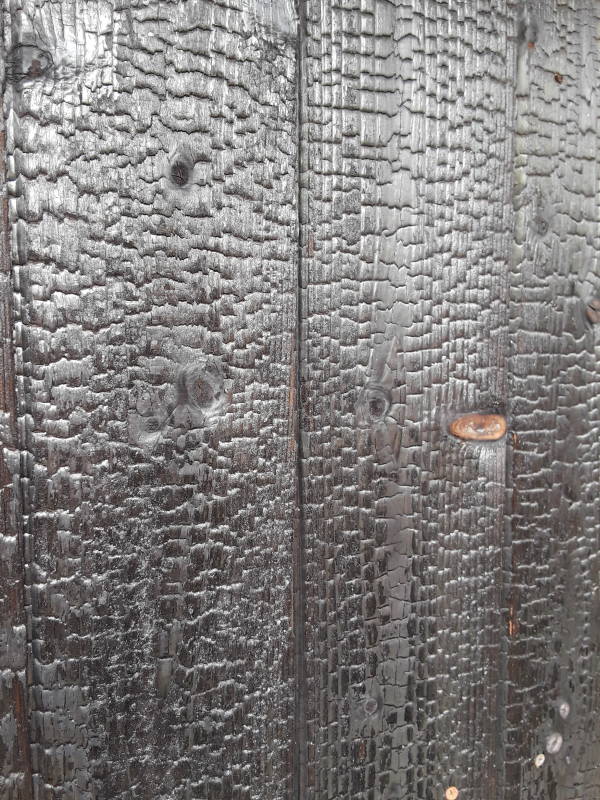
Miyanoura Public Bath
The contemporary artist Ōtake Shinrō designed the exterior of the town bath.

It's back the lane past the Domi Kowloon, at the next cross lane.


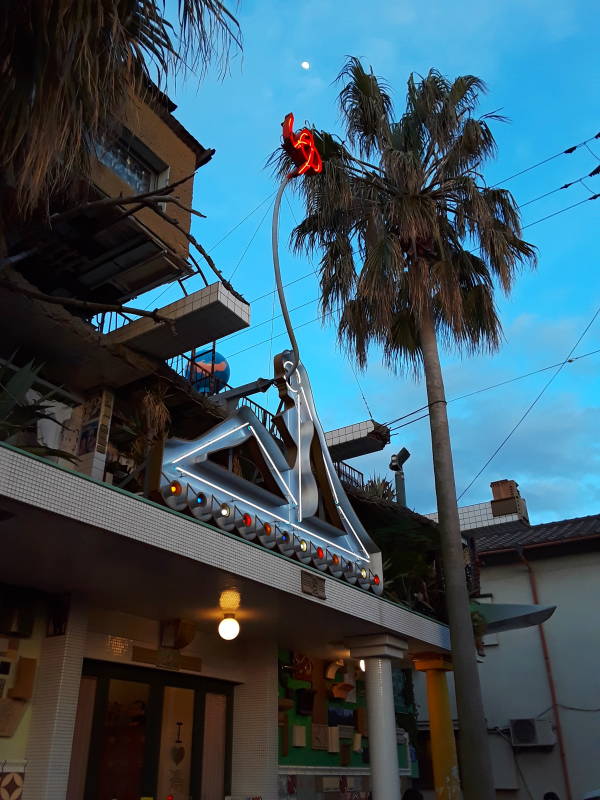

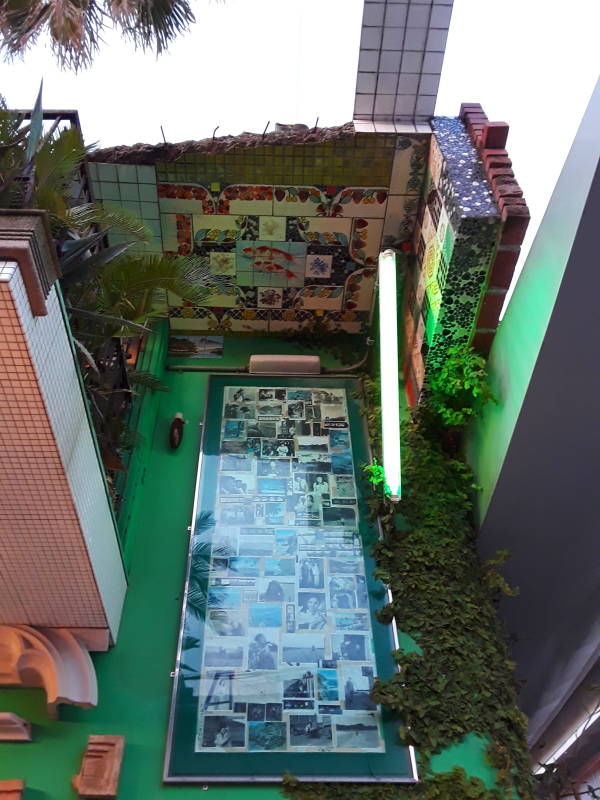
Dinner at Little Plum
Continue one more cross lane to the Little Plum, a hostel and cafe.
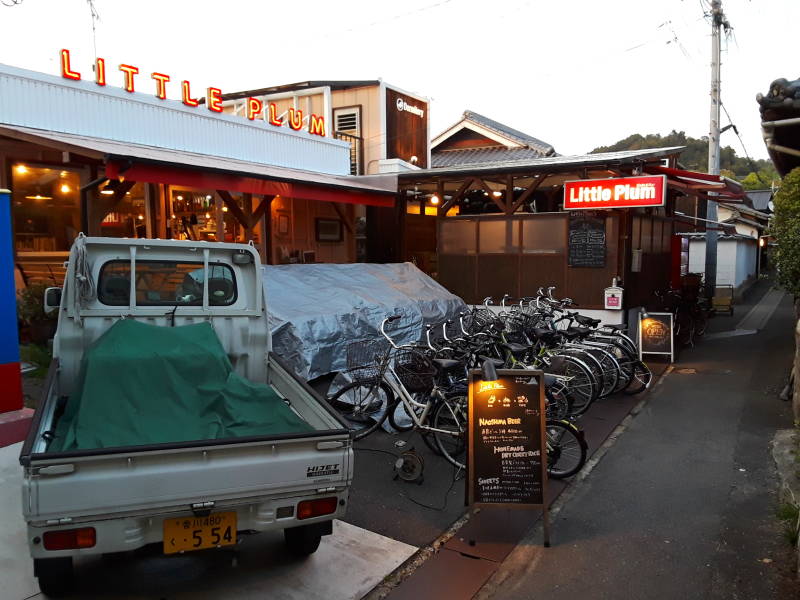

Salad, curry and rice, with boiled egg slices and pickles.

The above is specific to Naoshima. Or maybe you want to explore other places in Japan.



































